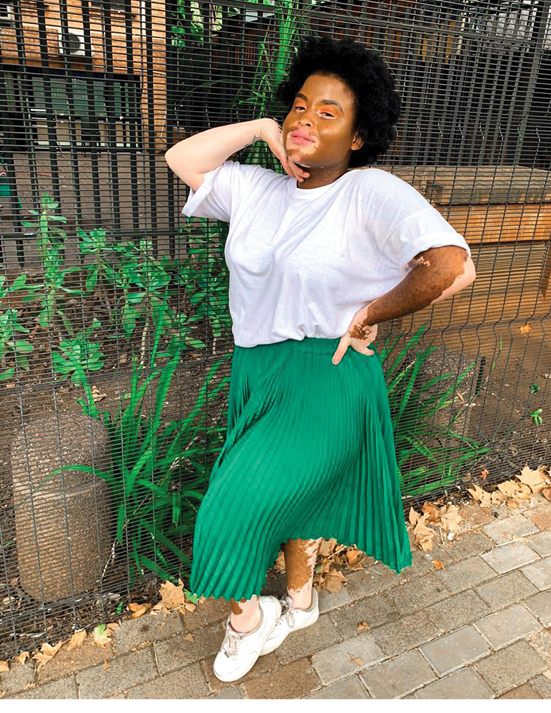Living with vitiligo
Living with vitiligo UrsulaOtshepeng Mmutloane (20) is constantly stared at by strangers. It is one of challenges she has to deal with as a result of being diagnosed with vitiligo when she was four. 
With World Vitiligo Day commemorated annually on 25 June to generate awareness around the disease, Vuk’uzenzele spoke to Mmutloane about what it is like to live with the condition.
Vitiligo is an autoimmune disease in which melanocytes (pigment producing cells) stop producing pigment, which leads to white spots on the skin and hair.
According to the Vitiligo Society of South Africa (VSSA), the condition only affects 1% of the world’s population. It is not curable, although many treatments are available.
Mmutloane’s vitiligo was initially only visible around her mouth, but gradually started moving to other areas on her body. She says that while living with the condition has its challenges, she is no different than anyone else.
“People always assume that I have tales to tell, but I don't. There is obviously something different in my appearance, compared to other black women, but all black women are different in their own way,” she says.
Mmutloane adds that she is often subjected to offensive comments and behaviour because of her condition.
“The hardest part is dealing with stares. Having to constantly explain to people why you look a certain why can be exhausting. Teaching children about the disease is one thing, but having to reprimand adults for being rude or offensive is the hardest to handle.”
Tshwane-based dermatologist Dr Chantelle Doman says people have misconceptions about vitiligo.
“There are myths about the disease, such as it being contagious; caused by cancer; eating certain foods, such as fish; caused by doing something wrong or a sin; affects certain races only; and that people with vitiligo are intellectually or physically impaired. All of these are not true,” she says.
About 30% of vitiligo patients have a relative that is affected by the disease. “This is due to multiple genetic factors,” explains Dr Doman.
Mmutloane says it is important for people to be educated about the disease.
“I believe that educating people about vitiligo could decrease incidents where strangers project their feelings, opinions and beliefs onto others. We often come across people that are influenced by the opinions of others and myths, without understanding a condition,” she says.
For more information, visit VSSA’s website at www.vitiligosocietysa.com or call 031 265 1505.